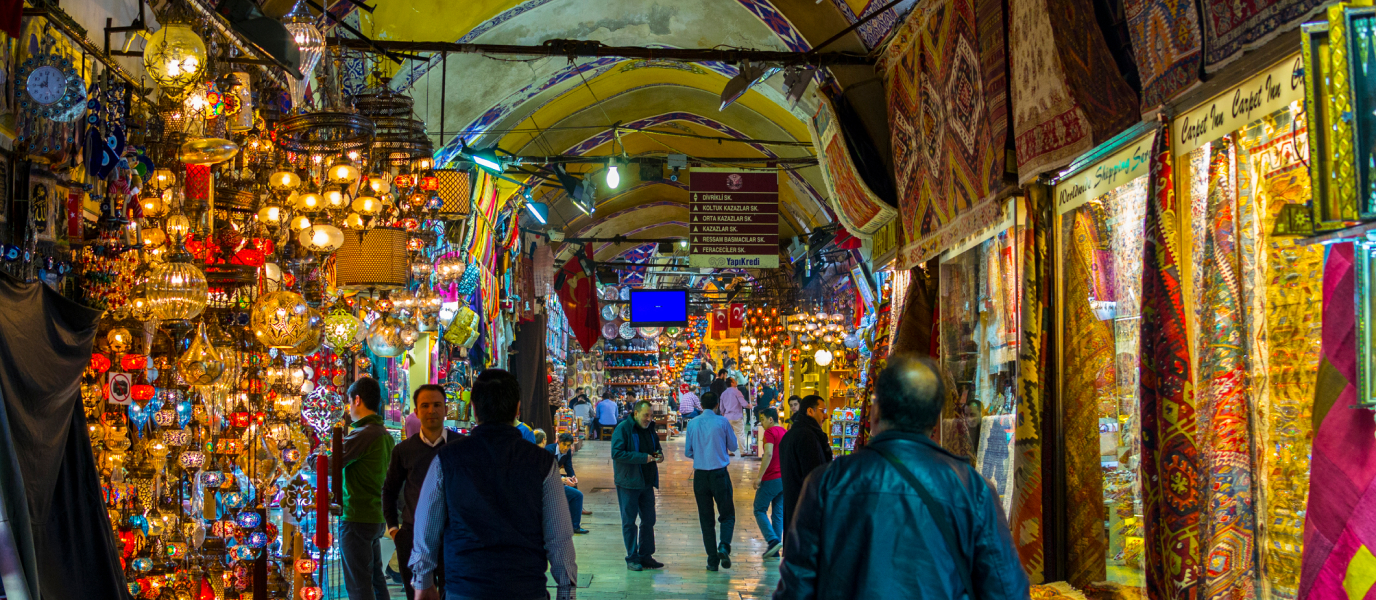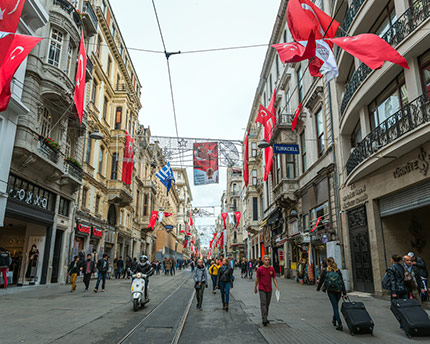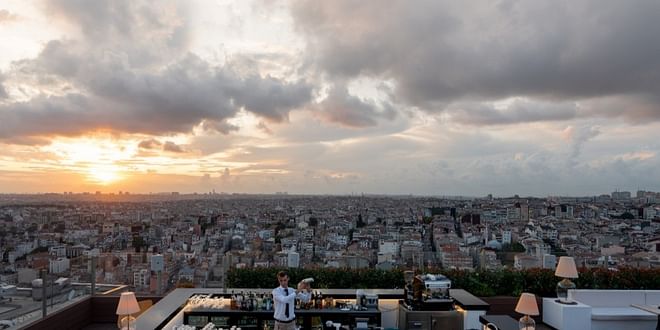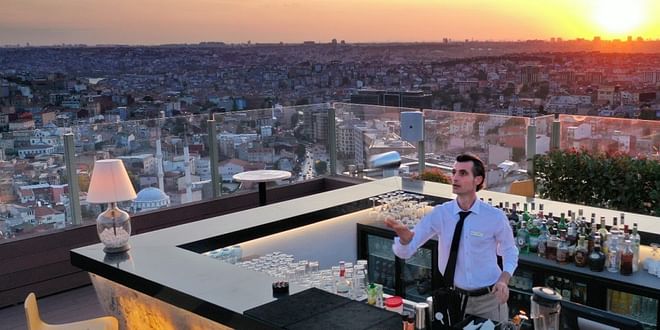Galata Tower is one of the great symbols of Istanbul. The medieval watchtower, regarded as one of the oldest towers in the world, looms above the houses in the Galata neighbourhood. From it you can enjoy some of the best views in Istanbul.
The tower is situated in the Galata neighbourhood, next to the former Constantinople on the opposite side of the Golden Horn. The area was once home to the city of Galata, a colony that belonged to the Republic of Genoa between the thirteenth and fifteenth centuries. These days it is well-situated in the centre of Istanbul, very close to the Bosphorus where it meets the Golden Horn.
In fact, the Galata neighbourhood is today one of Istanbul’s most cosmopolitan areas, where scores of young people congregate in search of bars, art and music, especially on weekends.
In addition to the tower, the Galata neighbourhood also lends its name to the bridge that crosses the Golden Horn. Throughout history, linking the banks of Karaköy and Eminömü had always been a popular idea and various bridges and walkways were successively built. The current Galata Bridge opened in 1994. It is a bascule bridge split across two levels with cars and trams on the upper part and numerous restaurants on the lower part.
The history of Galata Tower
The current tower was built in 1348 in what was the former Genoese city located on the northern banks of the Golden Horn. Initially called Christea Turris (Tower of Christ), at the time the tower was the tallest construction in Istanbul.
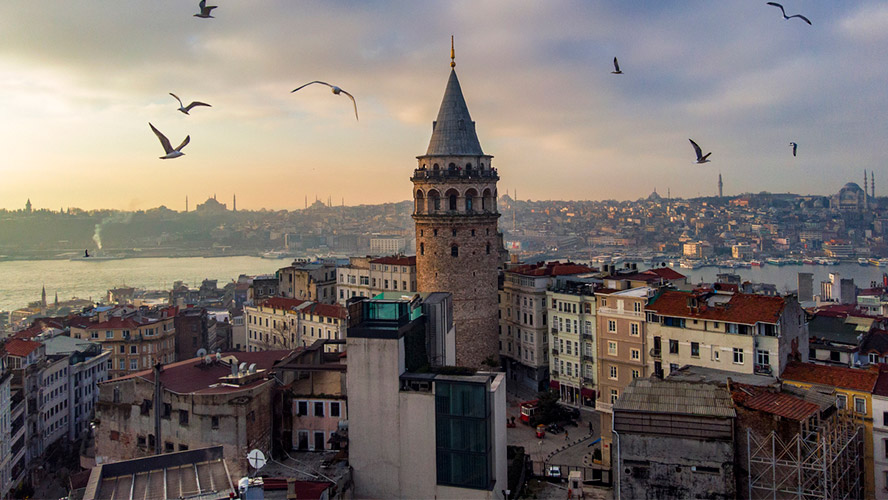
The site had initially been home to another tower, Megalos Pyrgos (Great Tower), an old wooden lighthouse built by the Byzantines in the year 507 by order of the emperor Anastasius. In 1204, during the so-called Fourth Crusade, the expedition that led to the downfall of the Byzantine Empire, the tower was eventually destroyed.
During the fifteenth century the new tower was used as a storehouse and jail holding prisoners sentenced to work on the construction of the port. In the sixteenth century it was converted into an astronomical observatory. Prior to that it was also used as a watchtower for spotting fires in the city.
The weak tower, however, would suffer from the effects of nature and in 1509 it was seriously damaged by an earthquake. In the eighteenth and nineteenth centuries the wooden cone-shaped roof was damaged by several fires and underwent restoration work on various occasions.
In 1875 the conical roof was once again destroyed, this time by a fierce storm. The tower remained without its cone-shaped form until the restoration that took place in the 1960s.
Galata Tower viewpoint
The views from the top of Galata Tower are without a doubt some of the best in Istanbul. From the tower’s viewpoint you can enjoy a 360-degree panorama with views of the Bosphorus, the Golden Horn, the Sea of Marmara, the historic peninsula and the neighbourhood of Beyoğlu itself.
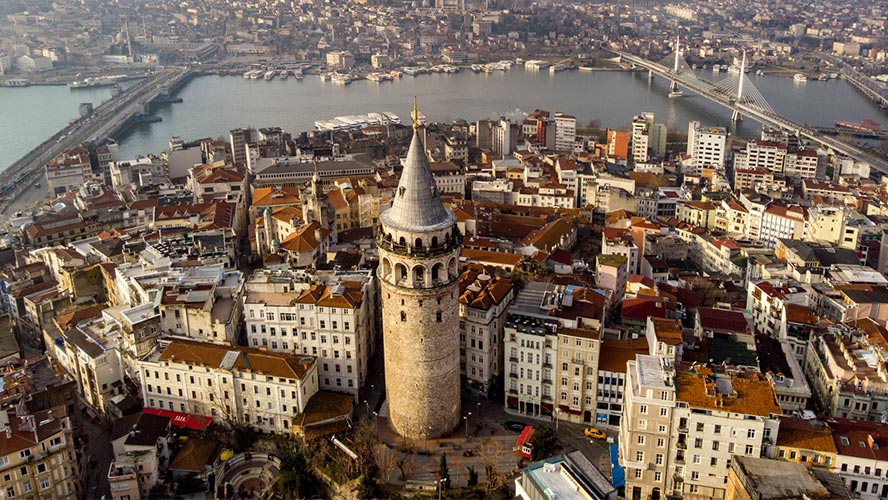
To get to the very top there is a lift which takes you to the seventh floor, from where you must do the last two floors on foot. Sporty types can also take the stairs the whole way up (143 steps).
At the top of the tower there is a bar and a restaurant where you can enjoy the magnificent views while having a drink or a bite to eat. In the evening a room is opened that plays host to a varied show including everything from folkloric dance to belly dancing.
No doubt if you are planning a trip to Istanbul, Galata Tower will be among your must-visit attractions. But if you would like to know more about this fascinating city that lies between two continents, don’t miss all our travel articles on Istanbul.
Interesting and unusual facts
- Although from the surrounding area Galata Tower gives off the impression of being tall, its height is not what makes it stand out. Reaching a height of 67 metres, set across nine floors, in its day it was the tallest building in the city. Its diameter reaches 16.5 metres at the base and its walls are 3.75-metres thick.
- It is believed that the tower was used as a platform for the flight that Hezarfen Ahmed Çelebi undertook around 1630 using artificial wings. On the flight he managed to cross the Bosphorus and reach the Üsküdar area on the Asian side of Istanbul. A six-kilometre flight!
- As if that was not enough, his brother Lagari Hasan also experimented in flying from the tower. In 1633 he attempted to fly with a rocket full of gunpowder.
- Galata Tower is also the subject of a painting by the famous French painter Pierre Prévost, who in 1818 created Panorama of Constantinople, a piece housed in the Louvre in Paris in which you can see the then Ottoman capital from the top of the tower. Prévost is regarded as one of the great panorama painters whose work depicts cities such as Paris, London, Amsterdam and Jerusalem.

























































